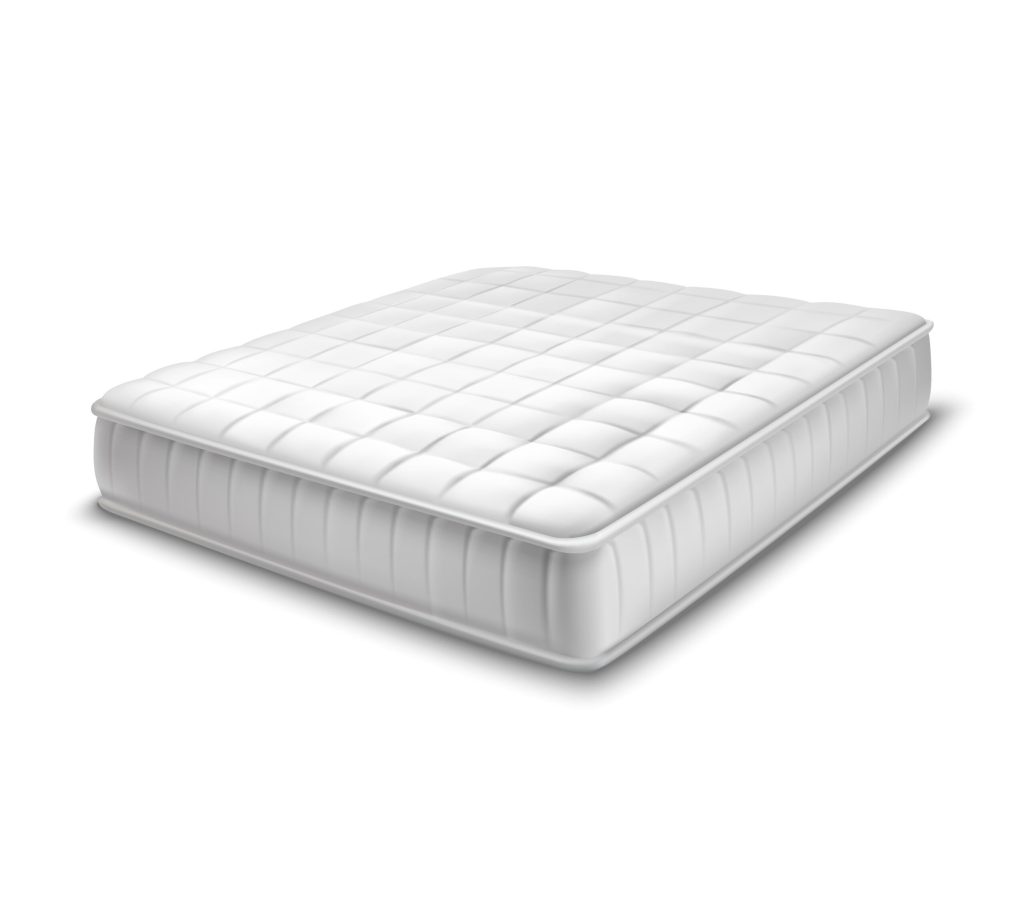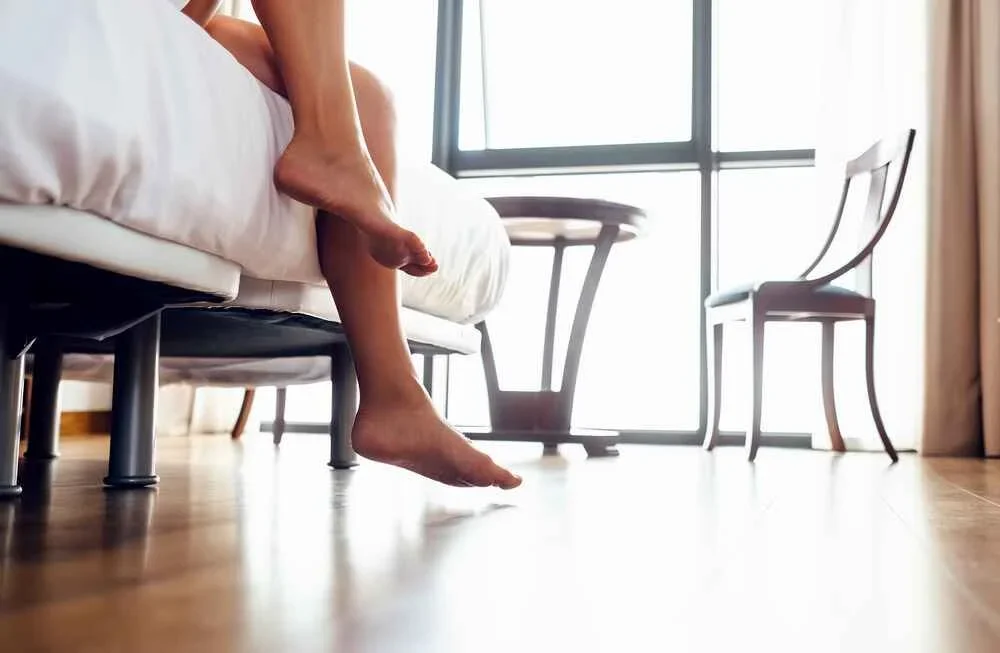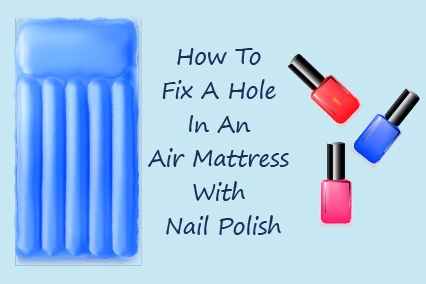Table of Contents
The money you invest in buying a good-quality mattress is your real investment. Once you make this investment, you want to let your mattress last longer. For this purpose, you take different steps to ensure the longevity of your mattress. One of the steps is to know how to clean a mattress. Keep in mind that a good quality mattress affects your sleep and hence overall health. If you can not sleep properly, you will not be able to perform your daily routine activities efficiently.
The day-to-day use of your mattress affects the health of your mattress. Your mattress may contain dirt, dead skin, dust, mist, odor, etc; thus, to remove them you surely need regular cleaning and maintenance. This can help you not only to increase your mattress lifespan but also in reducing your allergies. The best thing is that cleaning your mattress is not a big deal nowadays. For more tips and information on mattress care, visit Mattressfirmpillows.
How to Clean Your Mattress? Step-By-Step Procedure!
To safeguard your mattress from becoming a home of bacteria and dust, a detailed procedure for cleaning the mattress is as follows:
- Wash Your Bed Covers and Pillow Covers
First of all, you need to completely strip your bed sheet and pillowcases off to wash them. It is preferable to clean your mattress cover as often as you wash your normal bed sheets and pillow covers if you want to sleep in a clean and comfortable environment. Washing them at least once a week is recommended.
Try to wash the bedding in hot water to get rid of all the dust particles and germs. However, it is mandatory to follow the recommended instructions given on the cover tags for the washing purpose to avoid fading or shrinkage of the fabric.
- Assess Your Mattress Carefully
To clean your mattress in the best way, you need to assess the dirt and stains on it. You should closely check every part of your mattress for stains, smell, discoloration, and other symptoms to know which area of the mattress needs more attention for cleaning. Remember that the techniques used for routine mattress cleaning and removing stains from the mattress are a little different.
- What do You Need for Cleaning a Mattress?
The following accessories should be kept in hand to clean a mattress:
- Baking soda
- Dish soap or an enzyme cleaner
- Coldwater
- Bleach-free and unscented laundry detergent (Gentle)
- Rags or towels for cleaning
Instructions: You should be careful before using any kind of soap or detergent on your mattress because it may damage the fabric of the mattress. While applying any kind of product to the stains, keep in mind that not every stain can be removed easily from the mattress. In this case, choose wisely a mildly scented product for your mattress.
- Deodorizing Your Mattress
For deodorizing your mattress, you should use baking soda. Plain baking soda does not contain sharp fragrances like fresheners and fabric sprays. The fabric sprays or fresheners may contain intense odors, which may cause allergies. The use of baking soda will help you to get rid of unpleasant odors while absorbing the remaining moisture.
Spread a good layer of plain baking soda on your mattress and rub it gently all over the mattress. Leave it there for at least 15 minutes or even for a few hours if possible. The more time you will leave the baking soda on the mattress, the better it will work.
- Use a Vacuum to clean the mattress surface
After deodorizing your mattress, use a Handheld Vacuum/vacuum upholstery attachment. Clean the complete surface of your mattress with no residue left on it. Do not use any attachment with a rolling brush because it may damage the fabric of your mattress. While performing this step, all the dust, dead skin, hair, bugs, and other debris will be cleaned from your mattress. Make sure to vacuum every part of your mattress in detail.
- Spot Cleaning of Stains
Check all the areas of the mattress that are having stains carefully. Spot-clean these areas by using the provided methods:
- Take a clean cloth and apply a small amount of cleaning solution to it.
- Blot the stained area with a cloth gently.
- Take another cloth and apply cold water to it.
- Now blot that stained area with a water-soaked rag gently.
- Repeat this step until the stubborn stain is removed.
Precautions: Try not to over-soak the mattress. Use as little amount of cleaning solution and water as possible. Do not apply the cleaning solution directly to the stain or mattress itself. Use a clean cloth whether you want to apply the solution on the mattress or remove it. Different types of stains require different yet suitable solutions. The use of commercial enzyme cleaner is best in the case of the removal of blood, urine, sweat, and other biological stains from the mattress.
For other types of stains including grease, oil, drinks, soups, etc. you need to have different cleaning solutions. Usually, you can also make a solution of hydrogen peroxide and water in a ratio of 1:1 at home. The given method will be the same for removing every stain irrespective of the solution used in it. To remove the stain properly, you may have to try multiple solutions instead of only one.
- Sprinkle Baking Soda
After removing the stains from your mattress, sprinkle a little amount of baking soda again on the surface of your mattress. This will help in neutralizing odor and absorb moisture. Leave the mattress in this condition for a few hours in the area having proper airflow.
- Use the Vacuum again to clean the Surface
Let the baking soda sit on the entire surface of the mattress for a few hours and use a vacuum upholstery attachment again on the entire surface of your mattress. This step is necessary to vacuum the dry baking soda. Besides this, it is not necessary but you can repeat the above-mentioned two steps again and again if your mattress is filthy.
- Flip and Repeat
Repeat all the steps from step no. 4 to step no. 8 on the other side of the mattress as well. The lower side of the mattress does not probably contain any type of stain but it can still contain dust, mites, etc. Do not apply too much pressure in flipping the mattress especially if it is not flippable.
What is Day-to-Day Mattress Cleaning Methodology?
If you want to enjoy a healthy sleep environment, then cleaning the mattress is a mandatory activity. There are a few day-to-day cleaning techniques, which you should consider for keeping your mattress clean. These techniques are as follows:
- One should always start with the basic. Make your bed regularly by straightening the bed sheet, as this activity will prevent the dust from settling down on your mattress.
- Vacuum your mattress daily/weekly to get rid of dust and debris that may accumulate on the surface of your mattress.
- Remove the stain as early as possible with the spot-cleaning method.
- Try to rotate your mattress by 180 degrees.
- Always use mattress protectors to guard your investment against stains, spills, etc. The usage of a waterproof mattress protector is highly recommended.
- Try to avoid eating and drinking on your bed to keep it clean.
- Try to find an instant solution if you observe any unpleasant odor coming from your mattress.
- A handheld steam cleaner can also be used for detailed cleaning.
- Give sunlight exposure to your mattress, as sunlight has natural antibacterial properties.
Easy Tips & Tricks to Clean the Mattress
There are various tips and tricks available for the deep cleaning of the mattress. You can use any of the following tips and tricks to clean your mattress at best:
- Cleaning With Baking Soda
The easiest way is to take 16 ounces box of baking soda to clean the mattress. For better results, you can add 3 to 4 drops of your favorite essential oil including sandalwood, Lavender, etc. The essential oil has antibacterial properties. Shake the soda and oil well before applying to the stains. Another way to use baking soda is to sprinkle it on the bed and rub it gently. This technique is best to absorb moisture from the mattress.
- Cleaning With Baking Soda and Vinegar
Using baking soda and vinegar is worth cleaning the mattress that has been peed on. Take vinegar in the spray bottle and spray it on the affected area of the mattress. Let the mattress stay soaked in vinegar for at least 15 minutes. After this, sprinkle the baking soda on the mattress and leave it there for at least 10 hours.
- Cleaning with Hydrogen peroxide
Cleaning the mattress with hydrogen peroxide is suggested if your mattress has yellow stains. These stains are usually caused by sweating. To remove such stains, you just need one tablespoon of hydrogen peroxide and mix it with three tablespoons of baking soda. Apply this mixture to the stains and rub them till the stains get fade away. For better results, you can also add liquid detergent to this solution.
- Cleaning with Carpet Cleaner
In some cases, you can also use carpet cleaner for cleaning your mattress. Assess the composition of your mattress before going for a carpet cleaner, as these cleaners are rough and can damage the fabric of the mattress. However, these cleaners can be used for cleaning if you have a spring mattress.
- Cleaning with Shaving Cream
Cleaning your mattress with shaving cream is another trick especially if you have coffee stains on your mattress. Spray shaving foam on the stains, rub them with a brush, and leave them for at least 15 minutes. For better results, you can mix water and vinegar in equal proportion and spray on the stains of the mattress afterward.
- Cleaning Without the Vacuum
Many people think that the use of a vacuum is mandatory after cleaning the stains and debris from the mattress, which is not true. If you cannot invest in buying a vacuum then do not worry, you can consider the following alternatives while cleaning your mattress:
- A steam cleaner or hair dryer can be used instead of a vacuum cleaner for cleaning the mattress.
- Carpet sweepers and rollers are also other alternatives to use for said purpose.
- You can remove debris from your hands.
- You can also use packaging tape to remove fur and human hair from the mattress.
How to Clean a Mattress That Has Been Peed On?
We spend a lot of time with children as well as pets on our beds. To spend quality time on the bed, a clean surface is essential. However, accidents may happen and your child or pet may urinate on your mattress. What to do if such an incident occurs can be your concern. Do not panic and clean your mattress by following the below-mentioned steps:
- First of all, be quick. Remember, the faster you will move to clean your mattress after such an incident, the lesser will be the chances of damage by the urine.
- Gather all the supplies for the cleaning. It may include an enzyme-based urine cleaner, baking soda, white vinegar, a spray bottle, warm water, and mild detergent. Do not use the beach, as it will damage the fabric of the bedding and mattress. Remember, it is always recommended to read the manufacturer’s instructions to clean the mattress.
- Remove the bedding and wash it separately.
- Use the towel on the mattress to absorb the urine.
- Spray enzyme-based urine cleaner on the mattress to remove the odor and stains of the urine from it.
- Leave the cleaner on the mattress for some time and blot the affected area again.
- Mix white vinegar and water in the spray bottle and spray this solution on the surface of the mattress.
- Spray clean water on the affected area.
- Use the towel again to absorb the moisture and sprinkle baking soda on the mattress. Leave it overnight and vacuum the mattress. Let it dry in the air for better results.
Best Solution for Removal of Urine Stain and Odor
Besides following the aforementioned steps to clean the mattress that has been peed on, the solution of laundry detergent, baking soda, and hydrogen peroxide can also do wonders. Take eight ounces of hydrogen peroxide, add three to four drops of laundry detergent, and mix three tablespoons of baking soda in it. Once this solution is ready, fill a spray bottle with it and apply it to the affected areas. Wait for the mixture to dry on the surface and clean it after some time. You will notice that the stain on which the solution was applied will fade away.
Mattress Topper VS Mattress Protector
A mattress topper is primarily used to give comfort to the user whereas a protector is used to give protection to the mattress. A topper is an extra layer of fabric and is usually used when your mattress is old. In simple words, you can say that a mattress topper is optional but a mattress protector is mandatory. However, if you have both the topper and the protector, then it is recommended to use the topper first on the mattress and then the protector. In this manner, your topper will be protected along with your mattress. For buying the best quality mattress toppers and mattress protectors.
How to Clean a Mattress Topper?
Following are the steps to consider while cleaning the mattress topper:
- Remove the topper along with bedding and protector from your mattress.
- Vacuum the sides as well as the surface of the mattress before spot-cleaning the stains on the mattress.
- Sprinkle baking soda in the end and leave the mattress to dry in the air.
Besides spot-cleaning, you can also wash your mattress topper but for this, you need an oversized machine. Read the washing instructions properly and use warm or cold water accordingly with mild detergent to wash your topper.
How to Clean a Mattress Protector?
A mattress protector is a very thin layer of fabric that is used to protect the mattress from dust, debris, and stains. Washing the mattress protector is just like washing the bed sheets. To wash or clean it, you can read the washing instructions or follow these simple steps:
- Take lukewarm water in the washing machine.
- Add mild detergent. Do not use bleach.
- Wash your protector on the gentle cycle.
- Let it dry in the sunlight or air.
How to clean a mattress | Conclusion
Cleaning your mattress thoroughly will ensure its extended life. It helps you in removing stubborn stains from your mattress and gives it a fresh look. It gives you better sleep as well. However, to enjoy its extended life, ensure that the washing instructions given on the mattress have been followed before using any kind of solution on it. Try to remove all the stains without damaging the fabric of your investment. An easy way to protect your mattress from stains and dust is the use of a high-quality waterproof mattress topper and protector. For more tips and insights on mattress care, visit our Guides. Buy them and enjoy smooth sleep on your mattress.
Discover the ABCs of cozy sleep through our detailed Mattresses and Pillow reviews, linking you back to our homepage where dreamy choices abound.


